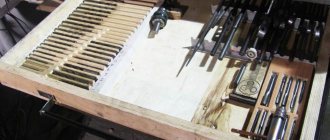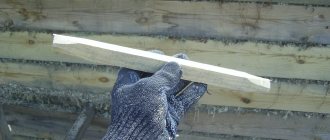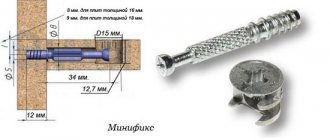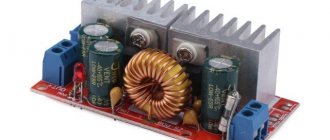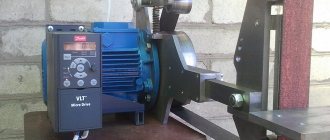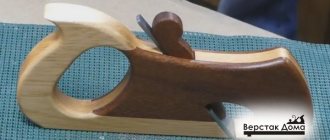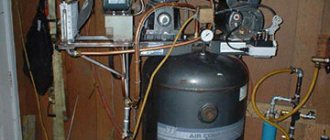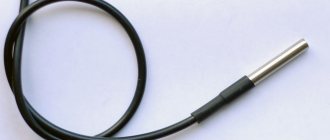If you often have to drill something, you probably have a whole set of tools on hand. For some, they are packaged in different boxes, for example, 1-5 millimeters, 5.1-8 millimeters, 8.1-12 millimeters. At the same time, the instruments are, as they say, “in bulk”, and not in single copies. Of course, this interval is very conditional, however, such storage is not entirely convenient.
Here's the thing: let's say you needed a drill with a diameter of 3.8 millimeters. To find it, you need to shake up the entire box of the first interval. And it’s good if this parameter is marked on the shank. If you don't have one, you'll have to use a caliper. All this takes quite a lot of time. To solve the problem, you need to have a drill organizer that keeps your most commonly used items within easy reach.
Basic storage rules
Drills are cutting tools. Their main task is to cut holes on various types of surfaces . Most often, drills are made of steel or other durable alloys. The determining factors for storing drills are the material of manufacture and the method of heat treatment of the products. However, signs of improper storage of tools most often include debris sticking to the product, broken blades, and more.
The corners are the weak point of the drill - they are the first, unlike all other parts of the tool, to break off. Storage in separate tanks also means that the possibility of various injuries in the workplace is significantly reduced. It is also worth noting that one of the significant advantages of various devices for storing drills is the ability to easily carry them. This becomes especially important when moving.
When the tools are laid out in a certain order, the speed of work also increases.
This is interesting: How to make a pipe bender with your own hands - drawings, photos and videos
Types of devices
The main purpose of cases, boxes, cases and other holders for drills is to conditionally isolate drills from other tools, and sometimes from each other, so that they do not rub against each other, which, as a rule, leads to dulling of the tools. The most famous and common containers for storing drill bits are these.
- Pencil cases. They are a convenient solution for storing drill bits in cars or when moving. Doesn't require much space. You can also include cases (soft pencil cases) in this category. The drill case can be used when hiking or transporting a small number of tools. There are also special portable bags for storing and transporting drills.
- Various wooden stands. Most often they are a three-layer structure. Holes-cells are drilled in the top two layers. Drills are inserted into them. The bottom layer plays the role of the bottom. The cells have different diameters. There is a wide variety of wooden coasters. They are durable. It is important to pay attention to the surface finish of the wood if you are making your own wooden stand. Otherwise, the service life of the wooden product will be significantly reduced.
- Plexiglas boxes . They look like pencil cases, but, as is obvious, they are only transparent. The main thing when buying or making it yourself is to check the strength of the lock.
- Organizers. Usually they are two or three parallel plates with holes of different sizes. The dimensions of the holes must correspond to the cross-sections of the tools that will be stored in them. The plates can be held together by one wall in the form of the same plate. This also includes plastic boxes. Sometimes they can be several cells into which drills can be inserted in a vertical position. In this case, the tools will not be isolated from each other, but will be sorted by size or frequency of use.
- Hanging structures. They are perhaps the most modern of all the species described here. However, the method of attachment to the surface and the structure of the surface must be taken into account. It is obvious that such holders are best secured by screwing them to the surface using nails. If the surface of the walls is covered with tiles or other similar materials, then the method of fastening must be changed. And also, especially when installing it yourself, you must take into account the load-bearing capacity of the structure. Some hanging structures will only need to be secured to the wall surface with epoxy glue. The very basis of such structures comes in two types - solid and perforated.
The latter are considered a more convenient and practical option, since, thanks to the holes located on the perforated panel, it is always possible to remove or attach new fasteners.
- Tool cabinets. They are distinguished by large dimensions. There are several subtypes - they can be mounted, stationary (similar to a regular chest of drawers or drawers), mobile (chest of drawers on wheels) and others. They represent the safest container for storing drill bits. There are combined models - hanging cabinets, which are a panel with shelves attached to it.
- Tubes . They are suitable for storing any long and thin items and tools. Most often they are stored together with similar tubes on large shelves. Tubes are used, as a rule, only when there is a shortage of free space. Tubes can be made of metal and plastic.
It is worth clarifying that almost all, and not just the last of the varieties mentioned here, can be either portable or stationary.
All currently produced models can be equipped with various parts - magnetic locks, clasps, rollers, as well as other various moving elements that make use more convenient.
see also
Comments 19
Thanks to the author! Well done. Just now I put the drill bits in order. I was figuring out how to arrange them. It turns out they thought of everything for me. Thank you.
Beautiful! no doubt! is it practical? It’s good if you need to make one hole once a month! And when with different drills at the same time? The covers get confused..., they are taken with dirty hands, the caps get confused (the diameter is different)... etc. and my nerves don’t really rest...
